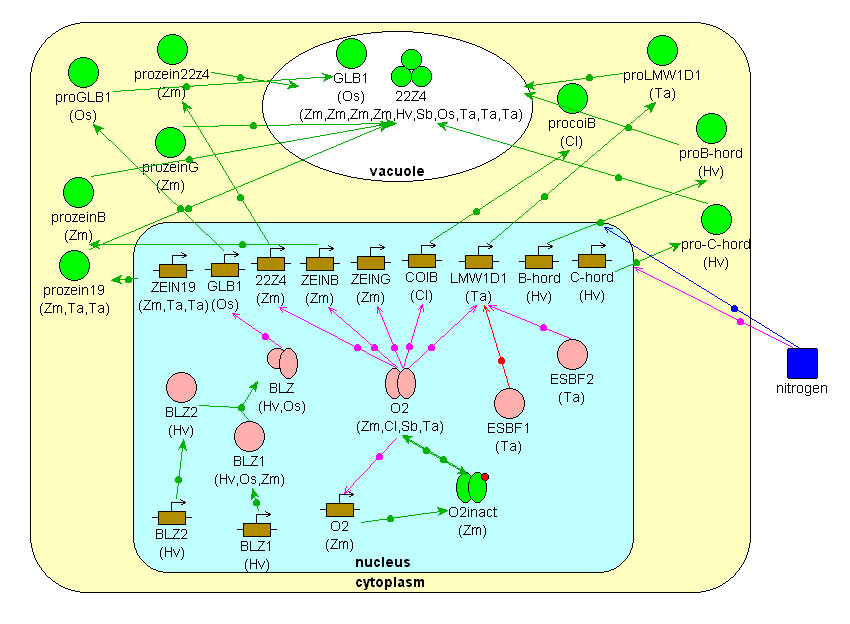
Gene network on accumulation of storage proteins in endosperm of grasses
during seed maturation.A gene network on storage proteins biosynthesis. The level of an
endosperm cell in grasses. At this level, only the genes of storage proteins and their
activators are expressed in the cells of storing tissues.

Elements of a gene network.
1. Storage proteins. These proteins are synthesized as monomer subunits that are accumulated in storage vacuoles and being packed into complex subunit structures. Storage proteins subsequently serve as the sources of nitrogen, sulphur, and carbon for the germinating embryo.
2. Transcription factors. Transcription factors (O2, BLZ, BLZ1, BLZ2, ESBF1, ESBF2) accumulated at the previous stages or synthesized de novo activate the genes encoding storage proteins.
3. Nitrogen. Nitrogen is an essential element of storage protein biosynthesis pathway. Its availability in the media influences the gene network functioning.
4. Relations between the gene network components. Relations between components of a network are designated in the scheme by arrows.
In the GeneNet database, each element of the scheme is supplied by detailed textual comments with references to the TRRD and MEDLINE databases.
Regulatory contours of a gene network.
1. Positive autoregulation. Transcription factor Opaque2 (O2) is described in some species of grasses and this factor is a conserved activator of genes involved in a gene network considered. Activation of O2 occurs as a result of dephosphorylation. Enhancement of transcription rate is produced by positive auto-regulation. In promoter region of O2 gene, there is a site recognized by O2. In such a way, self-activation of this gene takes place.
2. Action of an environment. The content of the storage protein, to some extent, depends upon availability of initial elements in environment. For example, under conditions of nitrogen excess in an environment, the hordein C is primarily expressed. In the norm, the dominating fraction is hordein B.